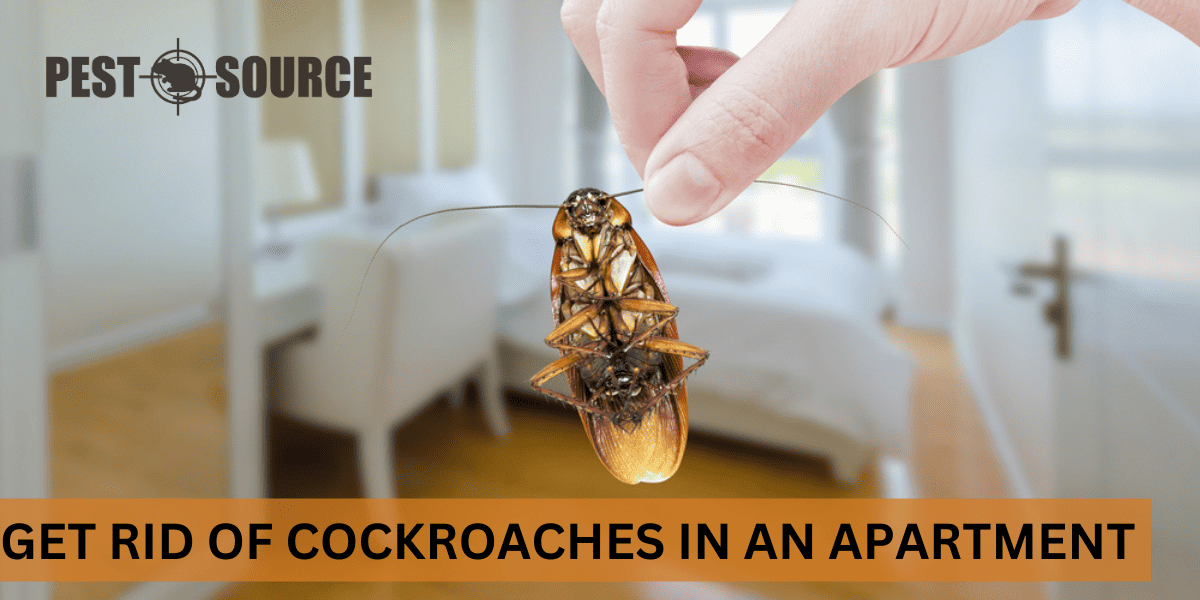Getting rid of cockroaches in an apartment requires a combination of cleanliness, sealing entry points, and using roach baits or traps. This guide will show you how to effectively manage a roach problem in an apartment setting.
POINTS
- Immediate Action: At the first sign of cockroaches, identify hiding spots and use a combination of baits, traps, and safe insecticides to reduce the population.
- Prevention Strategies: Seal entry points, maintain cleanliness, manage moisture, and store food properly to prevent cockroach infestations.
- Professional Assistance: For severe or persistent infestations, seek the help of professional pest control services to implement a comprehensive treatment plan.
- Collaboration: Landlords, tenants, and neighbors should work together to manage and prevent infestations in apartment buildings.
- Consistent Maintenance: Regular cleaning, structural repairs, and ongoing pest control measures are essential for long-term cockroach prevention and maintaining a roach-free environment.
Identifying Hiding Spots and Cockroach Signs
Cockroaches are nocturnal creatures that prefer dark, moist environments. To identify an infestation, look for signs such as droppings that resemble coffee grounds or black pepper, musty odors, and egg cases (oothecae). Common hiding spots include behind refrigerators, under sinks, and in cracks or crevices around cabinets and pantries.
Using Baits, Traps, and Insecticides Safely
Once you’ve located their hideouts, it’s time to take action:
- Baits: Place gel baits near cockroach pathways. These baits contain a slow-acting poison that roaches will carry back to their nests, effectively killing others.
- Traps: Sticky traps can help reduce the population by capturing roaches that cross their paths.
- Insecticides: If necessary, use insecticides carefully. Opt for products labeled for indoor use and follow the instructions precisely. Always prioritize safety, especially in homes with children and pets.
Remember, it’s crucial to combine these methods with thorough cleaning to prevent roaches from returning.
Identifying Sources and Preventive Measures in Apartments
Understanding how cockroaches enter your apartment and where they thrive is key to preventing future infestations.
Entry Points and Breeding Grounds
Cockroaches can slip through tiny cracks and gaps in walls, windows, and floors. They’re also known to hitch a ride on secondhand appliances, furniture, and even grocery bags. Once inside, they breed in secluded areas where food and moisture are readily available.
Sealing and Sanitation
To keep roaches at bay:
- Seal Cracks: Use caulk to seal any potential entry points.
- Reduce Moisture: Fix leaky faucets and pipes, and use dehumidifiers if necessary.
- Maintain Cleanliness: Regularly clean all areas of your apartment, especially the kitchen, to remove food residue and crumbs.
Proper Food Storage and Regular Inspections
- Store Food Securely: Keep food in airtight containers to avoid attracting roaches.
- Conduct Inspections: Regularly check for signs of cockroaches, especially in hidden areas, to catch any new infestations early.
Tackling and Preventing Roach Infestations: Strategies and Responsibilities
When dealing with a cockroach infestation, it’s crucial to employ effective strategies and understand the shared responsibilities in an apartment setting.
Natural Remedies and Chemical Treatments
- Natural Remedies: Consider diatomaceous earth or boric acid as natural insecticides. These substances can be sprinkled in problem areas to kill and deter roaches.
- Chemical Treatments: For more severe infestations, you may need to resort to stronger chemical treatments. Always use these as directed and consult a professional if you’re unsure.
Landlord and Tenant Responsibilities
Both landlords and tenants have roles to play in pest control:
- Landlords: They are typically responsible for providing a habitable environment, which includes addressing pest infestations.
- Tenants: Tenants should report problems promptly and cooperate with treatment plans.
Collaborative Efforts
Working together with neighbors and building management can lead to more effective prevention and treatment strategies, as cockroaches often travel between apartments.
Stay tuned for the second part of this article, where we will discuss special considerations for persistent and pre-existing infestations and long-term solutions to ensure your apartment remains roach-free.
Special Considerations: Persistent and Pre-Existing Infestations
Dealing with severe or long-standing cockroach infestations requires a strategic and often more aggressive approach. Here are some considerations and steps to take if you find yourself in this challenging situation.
Addressing Severe Infestations
Persistent infestations may not respond to typical treatments and can pose significant health risks due to allergens and pathogens that cockroaches carry. In these cases:
- Professional Help: It’s often necessary to enlist the services of a professional pest control company that can provide a comprehensive plan and more potent treatments.
- Health Precautions: Be mindful of health risks by cleaning surfaces and food prep areas frequently to minimize exposure to cockroach allergens and contaminants.
Moving into an Infested Apartment
If you’re moving into an apartment with a known roach problem, take immediate steps to mitigate the issue:
- Thorough Cleaning: Before settling in, deep clean the apartment, especially in kitchen and bathroom areas.
- Communicate with Landlords: Ensure that landlords are aware of the issue and have a plan for professional pest control measures.
Checklist for New Tenants
Here’s a quick checklist to help you start on the right foot in a previously infested apartment:
- Inspect and clean all corners, cabinets, and appliances.
- Seal any cracks or gaps where roaches may enter.
- Set up traps and baits as a proactive measure.
Long-Term Solutions: Ensuring a Roach-Free Environment
Maintaining a cockroach-free apartment requires ongoing vigilance and sometimes changes to your living habits. Let’s explore some long-term strategies.
Structural Repairs and Ongoing Pest Control
- Repairs: Address structural issues that can provide entry points or harbor cockroaches, such as gaps around pipes or in walls.
- Regular Pest Control: Schedule regular inspections and treatments from pest control professionals to keep roaches at bay.
Lifestyle Changes and Consistent Efforts
- Declutter: Reduce clutter to minimize hiding spots for cockroaches.
- Food Waste Management: Dispose of food waste promptly and properly, and avoid leaving dishes out overnight.
- Vigilance: Stay alert to the signs of a new infestation, and act quickly if you spot any.
The Importance of Consistency
Consistency in your prevention efforts is the key to a roach-free apartment. Regular cleaning, proper food storage, and swift action at the first sign of cockroaches are crucial.
- Routine Cleaning: Stick to a cleaning schedule that includes sweeping, vacuuming, and wiping down surfaces.
- Professional Partnerships: Maintain an open line of communication with pest control services for advice and assistance when needed.
How to Get Roaches Out of a Car?
To eliminate roaches from a car, start with a deep clean, vacuuming all surfaces and disposing of any trash or food remnants. Remove floor mats and clean them separately. Apply diatomaceous earth or boric acid to crevices and under seats, where roaches may hide. Use roach traps and baits inside the vehicle. You might also utilize insecticide sprays specifically designed for vehicles, but ensure adequate ventilation and follow all safety instructions. Park in a different location if your regular spot is near a roach-infested area to prevent reinfestation.



